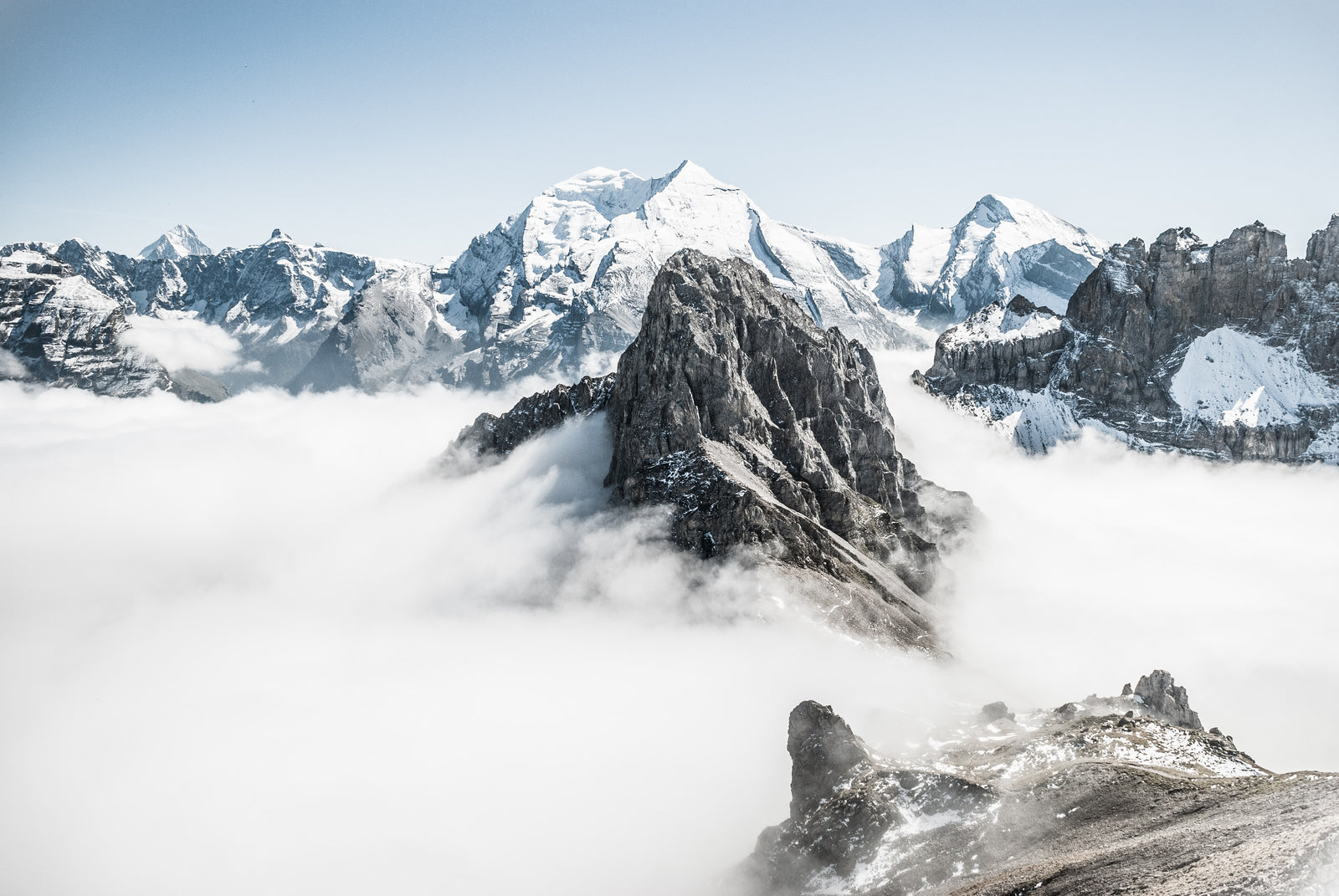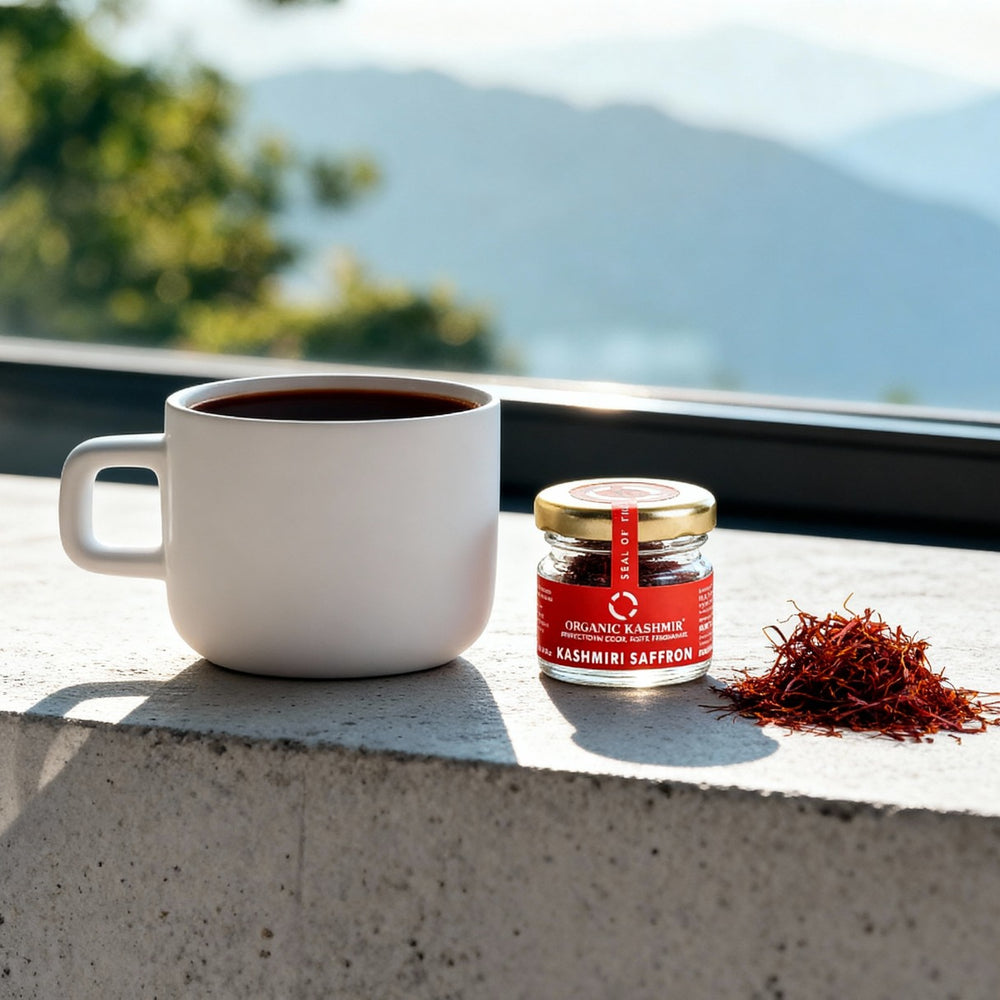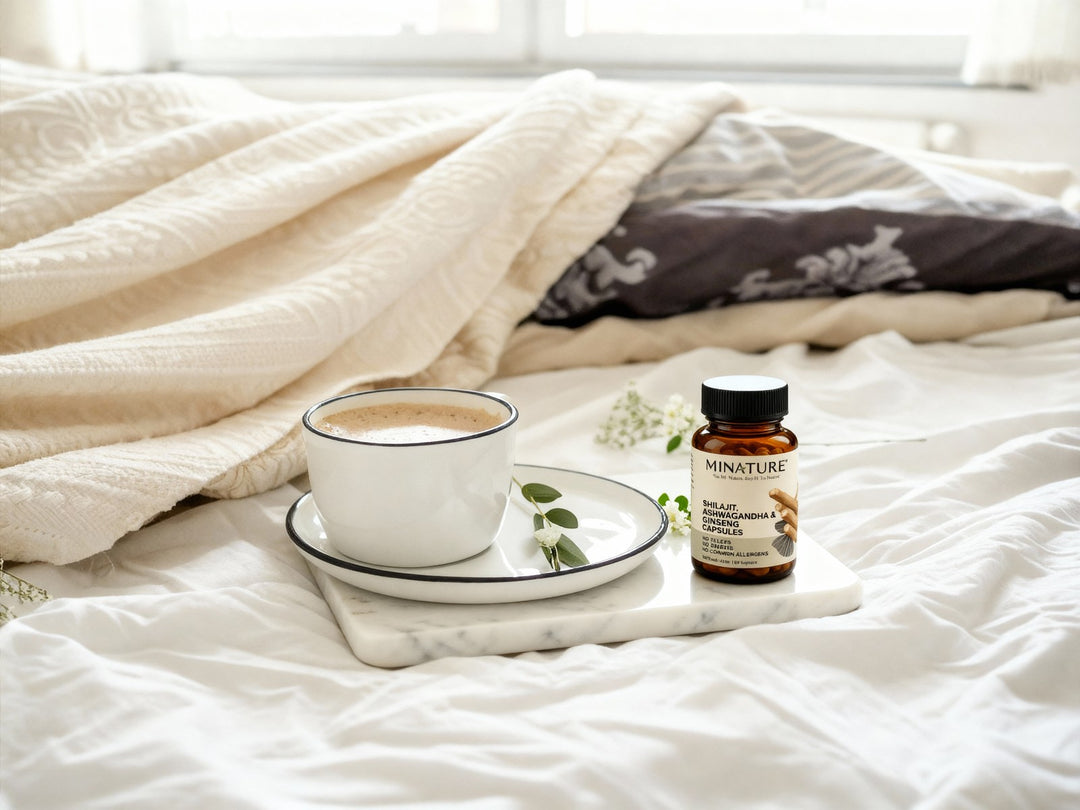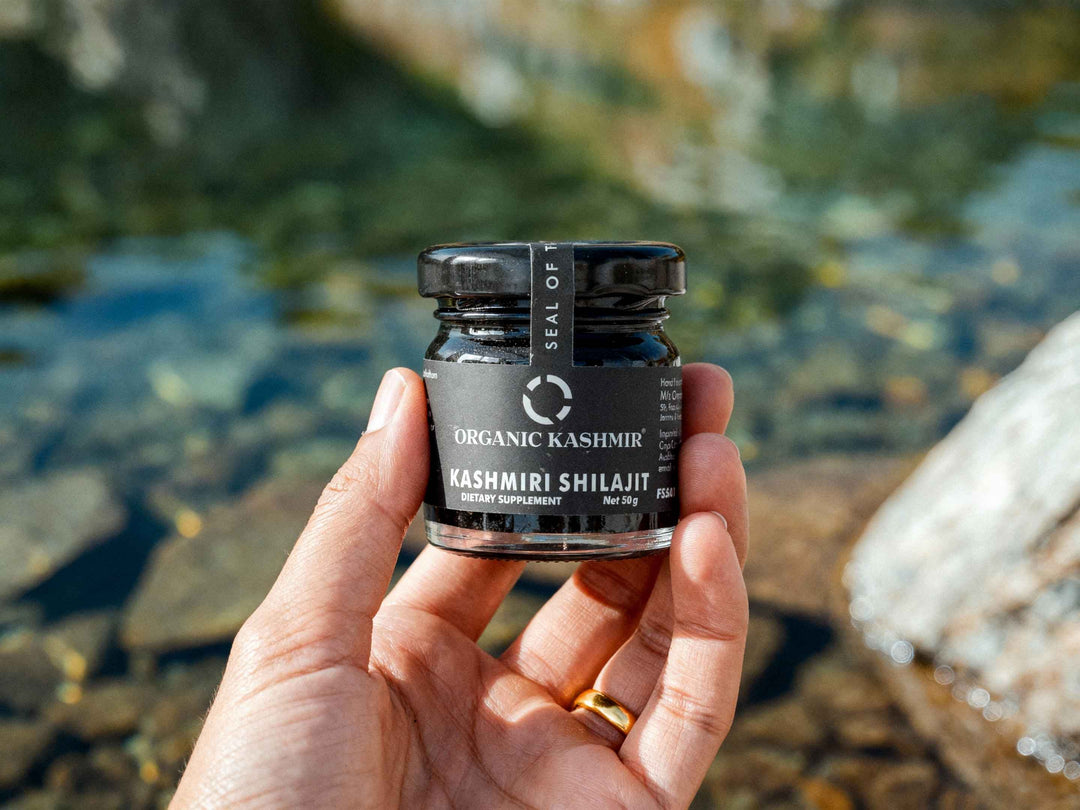Shilajit: Conqueror of Mountains

Shilajit is a Sanskrit term which translates to ‘conqueror of mountains’ and ‘destroyer of weaknesses’. Charaka Samhita describes this as ‘stones of metal like gold’. It is one of the main classified drugs (Maharasa) in Ayurvedic texts, Rasashashtra.
Latin name: Asphaltum punjabianum
Shilajit is a herbomineral extract, which is pale-brown to blackish-brown in colour. It is neither harvested from plants, nor found in animals, but it is a mineral wax exuded by rocks, in the form of resin-like semi-solid secretion. It promotes energy production in the human body by improving absorption and detoxification, stimulating blood formation, and strengthening the immune system. Its therapeutic effects are enhanced when consumed with milk. Its maximum level in the blood is reached after 12 hours of consuming it. It mainly works as an energy enhancer by recovering the degradation of muscles, bones and nervous system.
Origin
The Himalayan range was created millions of years ago when the Indian subcontinent collided with Asia. Under such compression, these crushed particles turned into tar-like smooth and sticky mineral pitch. Excessive heat in high altitudes causes fractures on surface of mountains during summer, and these brownish- black mineral pitches ooze out, settling on the rock, known as ‘Shilajit’ or ‘Shilaras’ in Ayurvedic terms.
Bio-components in Shilajit
Shilajit is composed primarily of Fulvic acid, which is responsible for its therapeutic effects. It also contains Humic acid, ironic acids, Benzoic acid, Hippuric acid, some lipids, amino acids, phenolic glucosides, etc. It also contains 84 minerals including iron, zinc, copper, silver, manganese, silica, phosphorus and lead.
Ayurvedic properties of Shilajit
Rasa (Taste): Katu (pungent), Tikta (bitter) and Kashaya (astringent)
Guna (Qualities): Laghu (light) and Rukhsha (dry)
Virya (Potency): Sheet (cooling)
Vipaka (Taste after digestion): Katu (pungent)
Types of Shilajit
Shilajit exudates from four types of mountain rocks, as follows –
- Suvarna Shilajit (rocks containing gold)
- Rajat Shilajit (rocks containing silgold)
- Tamra Shilajit (rocks containing copper)
- Loha Shilajit (rocks containing iron) – best among all.
A Panacea for mountain sickness
Major common issue associated with high altitudes, is mountain sickness which exhibits symptoms like nausea, breathlessness, dry nose, palpitation, dizziness, tiredness, dyspnoea, diarrhoea, gastrointestinal problems, edema, etc. The analgesic and anti-inflammatory properties of Shilajit help reduce these conditions.
Benefits of Shilajit
Diabetes
The active hypoglycaemic property of Shilajit helps in managing blood glucose level and regulating lipid profile to maintain healthy blood sugar levels.
Cognitive functioning
The bio-active component named dibenzo-alpha-pyrones helps in enhancing memory, building alertness, improving focus and concentration, bringing calmness, exhibiting benefits in management of Alzheimer’s disease, etc.
Promotes gut-health
The powerful anti-inflammatory and purgative properties of this herbo-mineral extract helps in prevention of the growth of bacteria named Helicobacter in the gut. It actively prevents constipation and piles by keeping the intestinal tract clear.
Cardiac health
With its inherent antioxidative properties, Shilajit is beneficial in relaxing and strengthening the heart muscles, thus preventing cardiac blocks, blood clots and bad cholesterol. Hence, it helps avert the risk of atherosclerosis and heart attack.
Anti-anxiety properties
The antidepressant and adaptogenic properties of this mineral pitch, helps balance vata and pitta doshas in the body, which in turn, aids in reducing mental stress, irritability, restlessness, palpitation, dementia and depression.
Anti-inflammatory properties
Shilajit has proven effectiveness in managing joint pain and inflammatory conditions such as arthritis, gout, etc., due to its powerful analgesic and anti-inflammatory properties.
Relives ulceration
The bio-active components like Fulvic acid, 4-methoxy 6-carbomethoxybiphenyl in Shilajit helps in decreasing the acid-pepsin secretion and shedding of cells, hence protecting against ulcerations.
Improves fertility
Shilajit, as a traditional medicine, can stimulate the production of Testosterone, which helps in boosting fertility, libido and virility in men.
Other benefits
- Improves immune system, owing to its high adaptogenic and anti-allergic properties.
- According to Ashtanga Hridayam, Shilajit is known to be the best rejuvenator among all other Ayurvedic drugs.
- Aids in relieving symptoms of AIDS, jaundice, thyroid disorders, etc.
- Helpful in urinary disorders.
- May prevent tumour growth and parasitic infections due to its potent antiseptic, lithotripsic, anodyne and anti-asthmatic properties.
How to use
- For obesity and weight loss: Shilajit (200 mg) along with Triphala churna (3 gms), once or twice a day.
- In urinary tract diseases: Shilajit is usually administered along with Punarnava
- In sexual disorders: it is taken along with Ashwagandha, Gokshura, Shatavari, etc.
- For fatigue: 1-2 drops of Shilajit resin with lukewarm milk after meal, once a day.
- In respiratory tract diseases: Take 1-2 drops of Shilajit resin. Mix it with honey and take it twice a day after meals.
- For maintaining oxygen saturation level: Take 1 Shilajit capsule/ 500mg powder and swallow it with lukewarm milk after meals, twice a day.
Shilajit Black Tea as rejuvenator
- Put 1.5 cups of water in a pan.
- Add ½ teaspoon of tea powder and bring it to boil for 5 minutes.
- Strain and add 2 pinch of Shilajit powder.
- Mix well and drink Shilajit tea in the morning.
- Immunological disorders like multiple sclerosis, systemic lupus erythematosus (SLE) and rheumatoid arthritis (RA).
- Shilajit should be avoided while consuming horsegram seeds, blacknightsgade (Solanum nigrum), meat (pigeon meat), food that cause excessive burning, heaviness, etc.
- Avoid exposure to excessive heat, air, exercises, etc.
- Avoid while breastfeeding, pregnancy, etc.
- Due to its hot potency, high dose of Shilajit can lead to a burning sensation in the body due to an imbalance of Pitta Dosha.
Don’t consume Shilajit for a long time period. Use as indicated in the pamphlet.
Tip: Consume ghee and milk in your diet to manage Shilajit associated complications.
Shop Pure Shilajit Extract Capsules | Shop Pure Himalayan Shilajit Resin
REFERENCES:
1. Charak samhita, Chikitsa-sthana (1-3/48-65)2. https://www.ncbi.nlm.nih.gov/pmc/articles/PMC2876922/
3. https://www.netmeds.com/health-library/post/shilajit-benefits
Published By Rasayana Limited. All Rights Reserved. No part of this publication may be reproduced or transmitted in any form or by any means, electronic or mechanical, including photocopying, recording, or any information storage and retrieval system, without permission in writing from the publisher.
Written by: Dr. Monika Mittal
Edited by: Taahira Om Kisna
Photography by : Kurt Cotoaga







